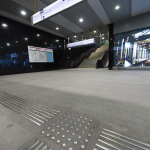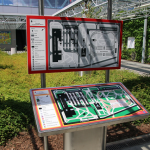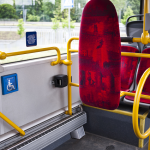The Warsaw authorities strive to make public transport safe, comfortable and accessible to all passengers. For many years, the needs of people with disabilities and passengers with reduced mobility have been taken into account. The actions taken aim at facilitating their travel around the city. This group includes wheelchair users, but also older persons using crutches, visually or hearing impaired, pregnant women or parents with young children in buggies.
At present, all buses, metro, the SKM (Urban Rapid Rail), and approx. 60 percent of trams are adapted to transport persons with disability. Buses and low-floor trams are equipped with a platform to facilitate the introduction of a wheelchair into the vehicle. It is located at the second door from the front of the vehicle. Low-floor buses also have the possibility to lower the entrance threshold to reduce the height difference between the curb and the floor.
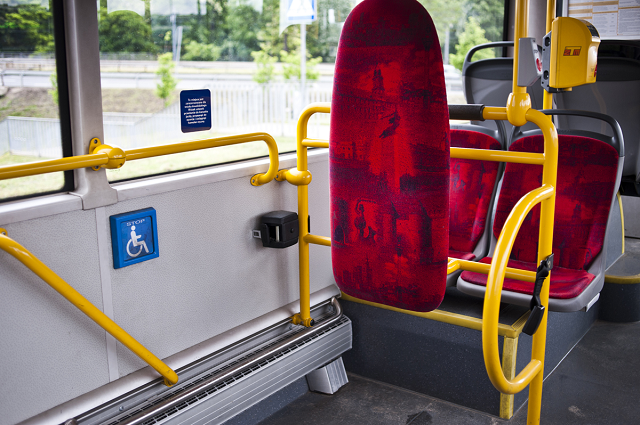
Stops are also being upgraded. A strip of anti-slip tiles is installed at the curbs along with a strip of yellow tiles with tabs which can easily be felt with feet. In addition, no elements such as lamps or electrical boxes are placed 1.5 meters from the edge of the platform. At the same time, the Passenger Information System is constantly being expanded at the most popular stops. In addition to information on timetables and obstacles displayed on electronic boards, blind people can use the voice information feature.
Travelling is much easier if the passengers, including the disabled, are well informed. That is why all new vehicles are equipped with electronic displays and voice information about routes and stops. Moreover, the white font is used on external displays in buses. This makes the line number and direction of travel better visible to visually impaired people and for all passengers on sunny days. There are also buttons with Braille inscriptions in the vehicles.
Modern trams and buses provide voice and route information. The messages give the name of the current stop and after the departure, the name of the next stop. The line number and direction are displayed on the outside. In timetables, the courses of low-floor vehicles are marked with a frame around the departure time. If, however, a given line is operated entirely on a low-floor rolling stock, then the relevant information is located under the departure hours. Owing to many years of financial expenditure from the city budget for investments in the area of public transport, at the moment the most modern low-floor vehicles operate on most lines.
The Warsaw metro is also accessible for the disabled. At each station, there is an elevator marked with a special pictogram, which allows passengers to get directly onto the platform. At stations and platforms there is a marking facilitating the movement of the blind. The entrance to the metro trains does not require going on any heights and apart from the route board there are also voice messages concerning the stations.
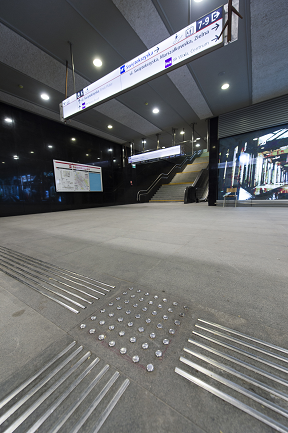
Passengers with disabilities and reduced mobility may receive assistance from suitably trained staff at the largest interchanges in Warsaw. Whereas the support when travelling with means of transport is ensured by carriers operating a given line.
Properly equipped rolling stock and properly adapted infrastructure are the basic elements that make it easier for people with disabilities to use public transport. Nevertheless, properly prepared and presented information is essential. The main source of information about the city’s public transport is the website available at www.ztm.waw.pl, prepared to be used by the disabled.
For the blind, the graphic menu of the page has been replaced with text. Owing to this, it is visible in high contrast mode, and readers can easily “read” the bookmarks. The deaf can use subpages translated into sign language. The translated information relates to the most important issues related to urban transport, such as prices and types of tickets, reduction entitlements and ticket sales networks. At the seat of the ZTM (Public Transport Authority) there is also a Passenger Service Centre providing services to the deaf, with an on-line sign language translator stand.
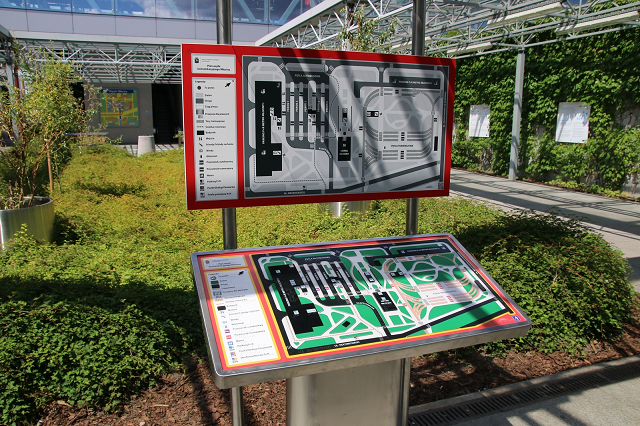
Soon it will be 10 years since the City Transport of Persons with Disabilities has been functioning in the Capital City. These are 15 specialized cars that provide people with disabilities with access to treatment or rehabilitation in the “door to door” system. On average, approx. 2,000 courses are performed monthly, used by approx. 4,000 people. The aim is to enable these inhabitants of the Capital City to go outside the proverbial four walls and ensure their mobility.
More information h.rakowska@ztm.waw.pl
